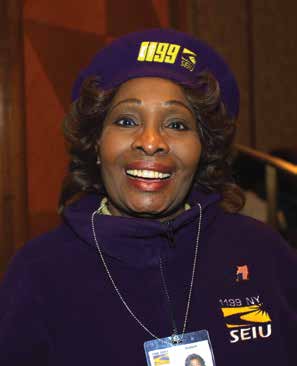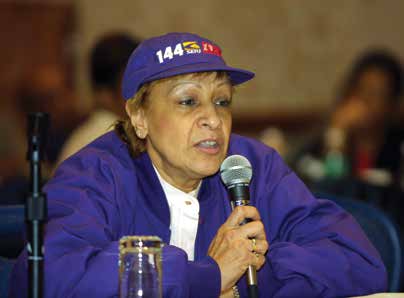THE LONG ROAD TO PARITY
June 16, 2023
The only way to fight industry consolidation is by bringing nursing home members together in one union.

In 1997, fistfights involving 1199, SEIU Local 144, and District 1115 members and organizers erupted outside Lydia Hall Hospital on Long Island. That was unusual because most of the earlier confrontations were over nursing homes.
It proved to be the straw which broke the camel’s back, though. Fighting came to an end the following year, after 1199 affiliated with the powerful Service Employees International Union (SEIU). Local 144’s 30,000 members later voted to merge with 1199. More than 200 nursing home members, half former 144 members, attended a national SEIU Dignity Conference in Detroit soon after.
“Organizing of all nursing home workers and unity between 1199 and former 144 members are vital,” said Fanny Alexander, an LPN at Ross Health Care Center in Brentwood, Long Island. “That way, the owners can’t play one against the other.”
SEIU declared 1999 the “Year of the Nursing Home Worker. District 1115, which had recently voted to affiliate with SEIU, worked with 1199 on a series of programs. By 2000, District 1115 had also merged with 1199. The 144 and 1115 mergers helped establish 1199’s Nursing Home Division and vastly strengthen 1199’s influence within the industry in New York.
That unity bore fruit in 2002, when members of the Association of Voluntary Nursing Homes and the Greater New York Healthcare Facilities Association (former 144 members) ratified ground-breaking contracts.
A highlight of that agreement was the establishment of a common expiration date with 100,000 other 1199ers—almost all of whom were members of the flagship League of Voluntary Hospitals and Homes. Members also won a wage increase of 13.63% over three years, improved health & pension benefits and inclusion in the Child Care and Job Security Funds.
“It doesn’t matter what political party we belong to,” Forest Hills CNA Mae Smith said at the time. “We got this contract because we are united and are all 1199.”

Unlike the 1199 hospital workers in the League, 1199 nursing home workers are employed in homes that are grouped together in various associations. Members represented by the League set the pace for contract provisions. Generally, after the League contract ratification, negotiations begin with the Group of 65 and the Greater New York Healthcare Facilities Association. The smaller associations, in turn, tend to agree to the settlements reached with the Group and Greater.

Increased density and member participation and PAC contributions have also translated into greater political influence. Political and legislative action that in New York State has prevented the loss of billions of dollars of Medicaid funding. That political clout extends to other regions, too. Last year in Florida, a right-to-work (for less) state, members helped to win a $15-per-hour minimum wage for all Florida nursing home workers.

Despite their historic victories, however, 1199 nursing home members face serious head winds only worsened by the COVID-19 crisis. Nursing homes, for instance, are not subject to the same kind of scrutiny as hospitals. 1199 has consistently lobbied legislators to exercise greater oversight over the homes and to address the plague of understaffing, over the years, but corporatization remains a major challenge.
Today, roughly 70 percent of the nation’s more than 15,000 nursing homes are for-profit operations. The growing trend towards extracting profit from nursing homes, which were once considered the responsibility of the state, has exerted profound downward pressure on care. Studies show that for-profit nursing homes are twice as likely to have lower ratings than non-profits. Many nursing homes fail to meet minimum requirements, and clearly put profits before people.
1199’s nursing home campaigns have always focused on quality care. The path to that goal includes fair wages, safe working conditions and adequate benefits for those who have been willing to put their own lives on the line to care for others.
1199 Magazine: May / June 2023

